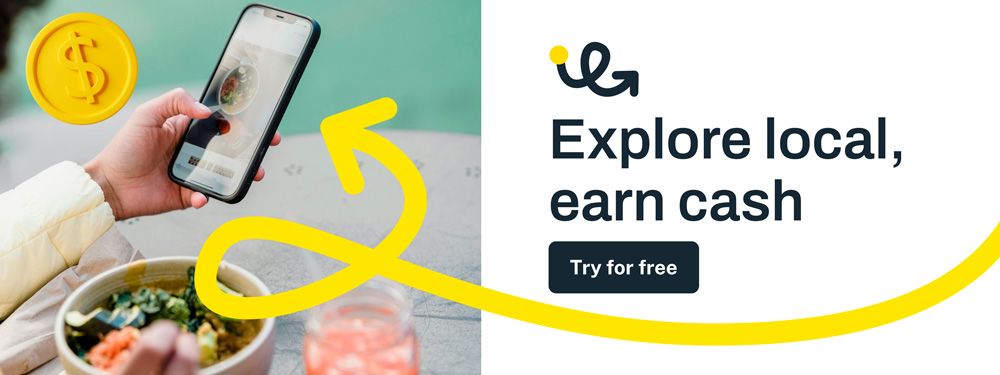10 Important Social Media Trends for 2024 and Beyond
Explore the hottest social media trends 2024 and stay ahead of the curve. Learn how to leverage these trends to boost your online presence and engage your audience effectively.
Nancy J. Hassler
Are you familiar with the latest trends in social media? If you aren’t then you might be losing relevant chances.
Looking at the astonishing 4.62 billion social media accounts spread across the world makes it clear that the digital space has become part and parcel of our very bodies. Even more curious is the fact that over time, individuals spend even more time on social media sites which is approximately 2 hours per day in a normal setting.
For companies, social media is an extremely powerful marketing tool to connect with their customers. Choosing the proper platforms allows you to reach out to your audience, enhance your visibility, and even create deep emotional bonds.
Rise of TikTok
With two billion users and more than one billion daily video views, TikTok is potentially the most addictive application in the world.
The majority of its users even below the age of twenty-four but a decent forty percent is composed of adults. Importantly, the youth seem to have accepted TikTok rather well as almost forty percent of Generation Z use TikTok as their first option for seeking information instead of Google. Nearly 40 percent of those from Gen Z say TikTok is wherein they look for new products and where they are able to buy the products too.
And indeed, not only an increase in the amount of investment but also the performance of the platform as marketers confirmed. In 2021, marketers almost unanimously, or 97% of them, deemed TikTok not among the most suitable platforms. The figure stands at only 3 percent today against all other platforms.

Crisis management
As per a PwC survey, more than 95% of companies believe that they will be facing a crises of some sort within the next two years. The challenge is that most of these organizations do not have a crisis response team and a crisis response plan and thus are fully exposed to the volatility and uncertainty of the current interconnected environment.
From social media posts, trends, it can be observed that minor irritation to actually critical concerns are often incorporated and interlaced in the communication process. When problems are ignored or unaddressed, a situation that could have been dealt with easily can turn into a dangerous case, resulting into high financial cost implications and loss of goodwill.
81% of respondents believe that social media has played a pivotal role in enhancing business accountability. 90% of social media users believe that businesses can regain their trust during a crisis by openly acknowledging mistakes and providing transparent insight into the steps being taken to resolve the issue.
Consumers increasingly demand transparency and honesty from brands. A survey revealed that 34% of consumers expect brands to respond to a crisis within 30 minutes on social media.
Successful crisis management begins long before a crisis occurs. Organizations should have well-thought-out crisis communication plans, including social media strategies, response protocols, and designated spokespersons.
Social Advertising
58% of internet users discover new products and brands through social media ads. Moreover, nearly 80% of users use social media for brand-related information. The impact is not just visible; it's quantifiable, as SurveyMonkey data reveals that 48% of social media users have purchased after encountering an ad.
Users’ information is obtained through social media sites, which helps advertisers disseminate content that is most relevant to users. This form of customization improves the quality of experience of the users as well as the conversion rates.
Features of social commerce, such as shoppable posts on Instagram trends and Facebook Marketplace, are making the purchase journey easier for customers. Advertising that addresses social issues as well as the marketing strategy integrates values that the target audience respects and can result in customer commitment.
For example, the usage of Instagram Stories as native to the app or Tik Tok ads within the app itself can serve the purpose and fully appreciate what the channel has to offer.

Micro-influencer marketing
89% of marketers believe that the return on investment (ROI) from influencer marketing either matches (41%) or surpasses (48%) other marketing channels. Moreover, it's cost-effective to get started, with a substantial 70.7% of micro-influencers.
The influencers command a colossal viewership of around 10 trillion views per month across all social media platforms. Approximately 46% of people view TikTok as a platform to discover new things, making it a prime avenue for branching out to new brands.
Only 1 in 4 businesses have tapped into the vast potential of these partnerships. This suggests ample opportunities for those interested in diving into this dynamic field.
Micro-influencers have smaller but highly engaged social media followers, typically from 1,000 to 100,000 followers. While they may not have the colossal reach of mega-influencers, their authenticity, niche expertise, and genuine connections with their followers make them formidable assets for brands. This niche focus enables brands to reach their desired demographics, ensuring their message resonates with the right audience.
LinkedIn is gaining popularity
Traditionally, LinkedIn was synonymous with job searches and career advancement. However, its evolution has led to a shift where professionals can proudly display their expertise, share invaluable insights, and craft their brands. These social media trends 2023 led to the rise of LinkedIn influencers.
These creators on LinkedIn have built their reputation focused on specific areas. Through posts, articles and videos, they bring in their viewpoints, recommendations, and most importantly – their in-depth industry know-how, actively engaging the audience and stimulating conversations.
The algorithm of LinkedIn has successfully adjusted to this evolution, promoting and protecting the substance of creators and facilitating the receipt of vivid conversations. Essential Live and LinkedIn Stories for instance have allowed creators to provide updates and advanced content to their audiences’ while giving them chances for interactions.

User-generated content
UGC refers to any content created by users or customers that showcases a brand's products or services. It can take the form of customer reviews, testimonials, social media posts, images, videos, or blog posts. Essentially, it's authentic content generated by your audience that endorses and shares their experiences with your brand.
What sets it apart is that it's created not by brands but by their unpaid fans, customers, or users. When potential customers see others benefiting from your offerings, it can sway their purchasing decisions.
UGC is prized for its authenticity and lack of bias compared to brand-produced content. 84% of customers trust peer reviews and testimonials more than traditional advertising.
The more existing customers talk about your brand, the more trustworthy it becomes. Incorporating UGC into your content strategy can boost your search engine optimization efforts.
Video content
Video content is now an indispensable element of any successful marketing campaign. A remarkable 96% of marketers acknowledge its importance in their strategies.
Short-form video platforms like TikTok, Instagram Reels, and Snapchat have revolutionized content consumption. With their bite-sized, easily digestible content, they've attracted millions of users, especially younger demographics.
From behind-the-scenes glimpses to product packaging reveals, brand Q&As, and participation in viral trends, customers relish the chance to visualize a company's personality. According to social media trends 2023, video content provides that extra layer of connection that text alone can't deliver.

Employee advocatory
Companies, both large and small, are recognizing the potential of their employees as brand advocates on social media.
Your employees can exponentially expand the reach of your brand. With their networks on platforms like LinkedIn, Twitter, and Facebook trends 2022, they tap into audiences that might otherwise remain untapped. It's like having an army of brand advocates working in unison.
Social media content shared by employees has proven to be generating 8 times more engagement than content shared on the brand's official social channels. Moreover, this content is shared a remarkable 25 times more frequently.
Employees can convey authenticity and foster trust that's hard to achieve through traditional corporate channels. Audiences tend to trust content shared by employees over branded content.
Support
Customers now expect timely responses to their inquiries or complaints on social media. Brands that prioritize quick and helpful replies stand out. Beyond promoting products, brands are creating content that educates and informs. How-to guides, tutorials, and FAQs are now part of social media strategies.
For instance, airlines now provide real-time updates and rebooking options on Twitter during flight disruptions. Retail brands have integrated chatbots into messaging apps to assist with shopping queries. Educational institutions use social media to answer students' questions and share study resources.
The "Support" is one of the top trends in social media is a testament to the evolving role of these platforms. They are no longer just spaces for promotion but crucial channels for interaction and assistance.
Social SEO
Many Gen Z users now prefer TikTok as a search engine for various queries. This shift in user behavior has led brands to rethink their social media strategies. Businesses are leaving traditional hashtags behind and embracing keywords to align their content with what users are searching for. TikTok has even introduced a "most-searched for" feature, directing users to popular videos associated with specific keywords.
Social media platforms provide a massive audience for content dissemination. When content goes viral or gains traction on social media, it can drive organic traffic to a website, boosting its SEO performance.
- Ensure your social media profiles are complete, accurate, and aligned with your brand's messaging. Use relevant keywords in your profiles to enhance discoverability.
- Share high-quality, shareable content on your social media platforms.
- Use relevant hashtags on platforms like Instagram and Twitter to expand the reach of your content.
